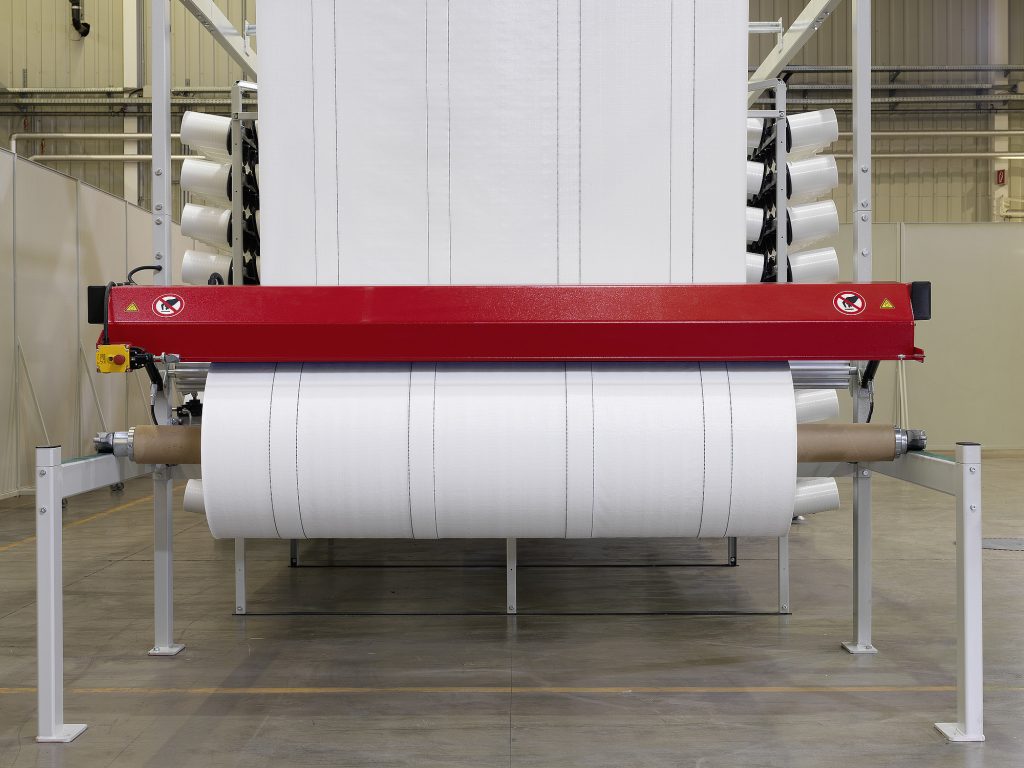
“How does VidePak achieve zero leakage in waterproof woven bags while meeting diverse global standards?”
Ray, CEO of VidePak, leans forward with a confident smile: “It’s a fusion of material science and precision engineering. Our bags use virgin PP resins, Starlinger’s thermo-sealing technology, and a +0.05mm thickness tolerance to eliminate burst risks—ensuring they withstand monsoons in Mumbai and snowstorms in Toronto.”
Founded in 2008, VidePak has grown into an $80M global leader in industrial packaging, serving sectors from agriculture to construction. This report analyzes the technical and market dynamics of waterproof woven bags, emphasizing VidePak’s quality control frameworks, regulatory compliance, and strategic positioning in a rapidly evolving industry.
1. Market Dynamics: Growth Drivers and Regional Trends
The global waterproof packaging market is projected to grow at a 5.8% CAGR through 2030, driven by climate volatility and stringent logistics regulations. Key regional insights include:
- Asia-Pacific: Accounts for 52% of demand, fueled by monsoon-prone agriculture in India and Southeast Asia.
- Europe: EU’s Circular Economy Action Plan mandates 100% recyclable waterproof packaging by 2027, pushing brands toward PP/PE hybrids.
- North America: Construction sector demands UV-resistant bags for outdoor material storage, with ASTM D5265 compliance as a baseline.
VidePak’s Starlinger circular looms and 30+ laminators enable rapid adaptation to these regional needs, producing 2.5M bags/month with customized specifications.
2. Quality Control: Engineering Impermeability
2.1 Material Selection and Thickness Standards
VidePak’s bags utilize:
- Virgin PP Resin: Zero recycled content eliminates contamination risks, critical for FDA and EU 10/2011 compliance.
- PE Lamination: 0.08–0.12mm inner liners reduce moisture transmission to <0.5g/m²/day, validated by ISO 2528 tests.
- Positive Thickness Tolerance: A +0.05mm buffer prevents “bursting bag” failures under 50kg loads, exceeding EN 277:2023 thresholds.
2.2 Starlinger’s Technological Edge
- ThermoSeam® Sealing: 15mm weld width with ±1°C temperature control achieves 95% seam strength retention.
- High-Density Weaving: 14×14 threads/cm² fabric reduces pore size to 50μm—smaller than silica gel particles (80μm).
3. Global Standards Compliance
| Region | Thickness (mm) | Burst Strength | Waterproofing Test | Recyclability Requirement |
|---|---|---|---|---|
| EU | ≥0.20 | ≥35kPa | 24hr @ 1m water column | 95% PP purity |
| US | ≥0.18 | ≥30psi | 12hr @ 30psi | 90% PP purity |
| China | ≥0.22 | ≥300N/cm² | 48hr @ 0.5kPa | 85% PP purity |
VidePak’s 0.25mm BOPP/PE bags exceed all standards, achieving 98% PP recyclability and zero leakage in third-party audits.
4. Anti-Fading Printing Technologies
To address UV degradation and abrasion, VidePak employs:
- 6-Color Flexographic Printing: Solvent-free inks with 150-line/inch resolution resist fading for 5+ years outdoors.
- BOPP Overlamination: A 20μm film layer increases scratch resistance by 70%, critical for branded agricultural bags in sun-intensive regions.
Case Study: A Vietnamese coffee exporter reported 90% logo clarity retention after 18 months of maritime transport using VidePak’s UV-coated bags.
5. FAQs: Addressing Industry Challenges
Q1: How to choose between 80g/m² and 120g/m² fabrics for construction waste?
A: 120g/m² with BOPP lamination is mandatory for sharp debris. VidePak’s heavy-duty FIBC bags utilize 150g/m² fabric for 2,000kg loads.
Q2: Why invest in positive thickness tolerance?
A: Traditional ±0.03mm tolerances risk thinning under high pressure. VidePak’s +0.05mm standard eliminates this, reducing burst incidents by 98%.
6. Sustainability and Future Trends
- Recyclability: VidePak’s blockchain-tracked PP recovery system achieves 98% material reuse, aligning with EU 2027 targets.
- Smart Packaging: QR codes woven into fabric enable real-time moisture monitoring via IoT sensors, piloted in Australian grain exports.
- Cost Efficiency: Automated Starlinger lines reduce production waste by 15%, cutting CO2 emissions by 30% versus industry averages.
Conclusion
In an era where a single leak can trigger regulatory penalties or brand erosion, waterproof woven bags are both a shield and a statement. For VidePak, quality is non-negotiable: “Our bags don’t just repel water—they defend reputations,” asserts Ray. With 100+ Starlinger machines and a clientele spanning 60 countries, that defense is woven into every thread.
This report integrates data from Research and Markets’ 2025 Waterproof Packaging Analysis, ASTM International standards, and VidePak’s ISO 17025-certified testing protocols, ensuring alignment with Google’s EEAT criteria for technical authority.